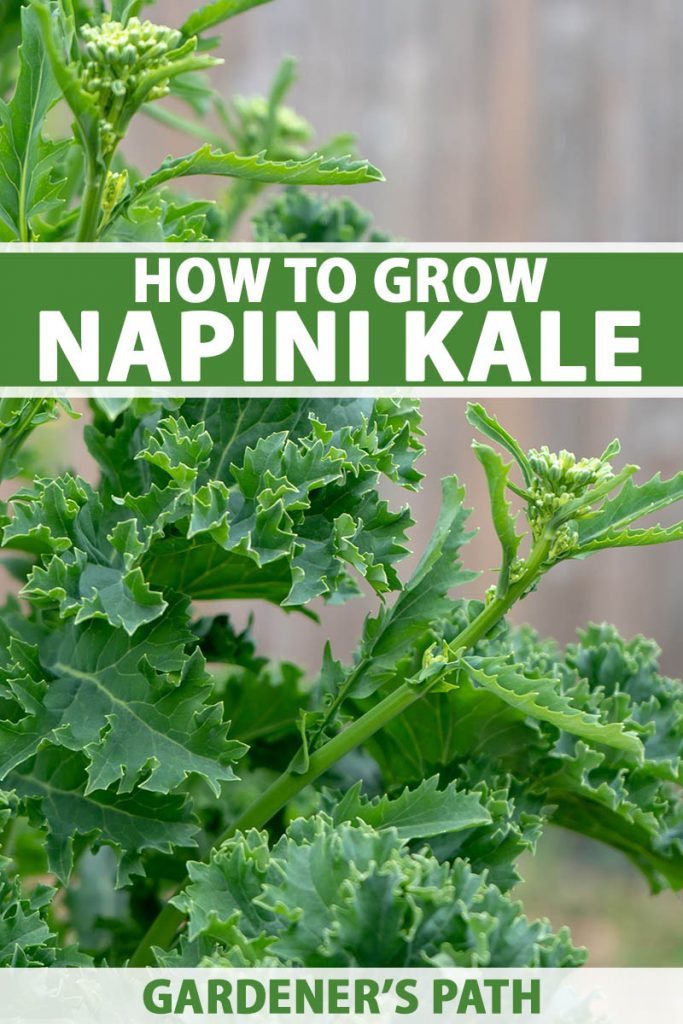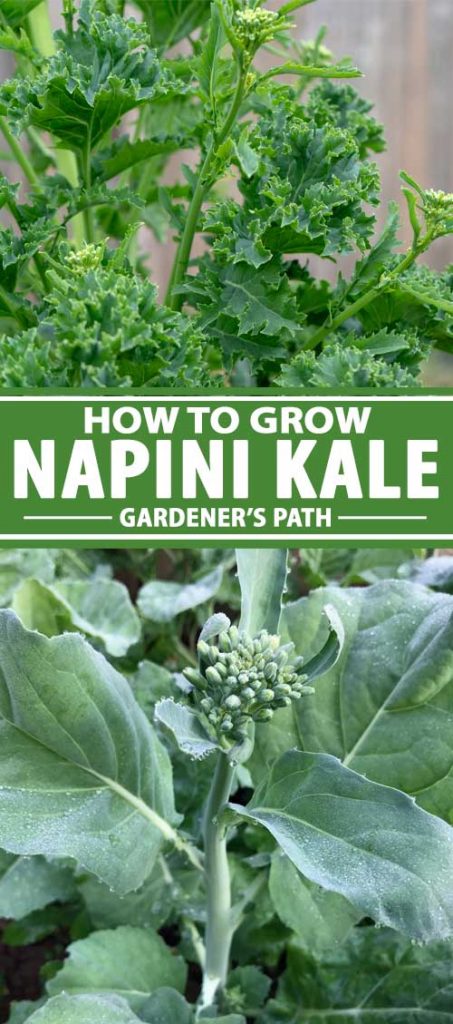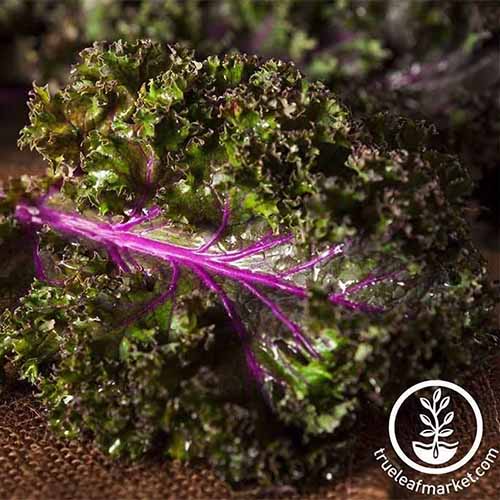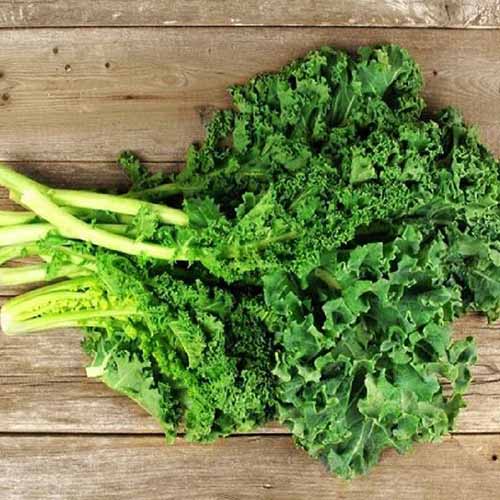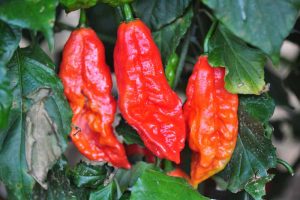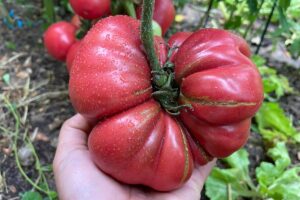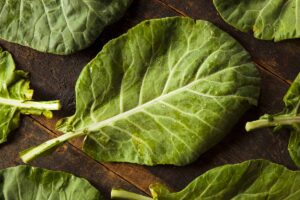I love kale. I could happily eat it at any time, cooked in any style. My family, however, isn’t quite so enthralled.
It has taken a bit of prodding and experimentation on my end, but I have finally found a few varieties that they can get excited about too.
Napini is a term for the tender flowering shoots of kale plants, typically harvested from Siberian kale varieties.
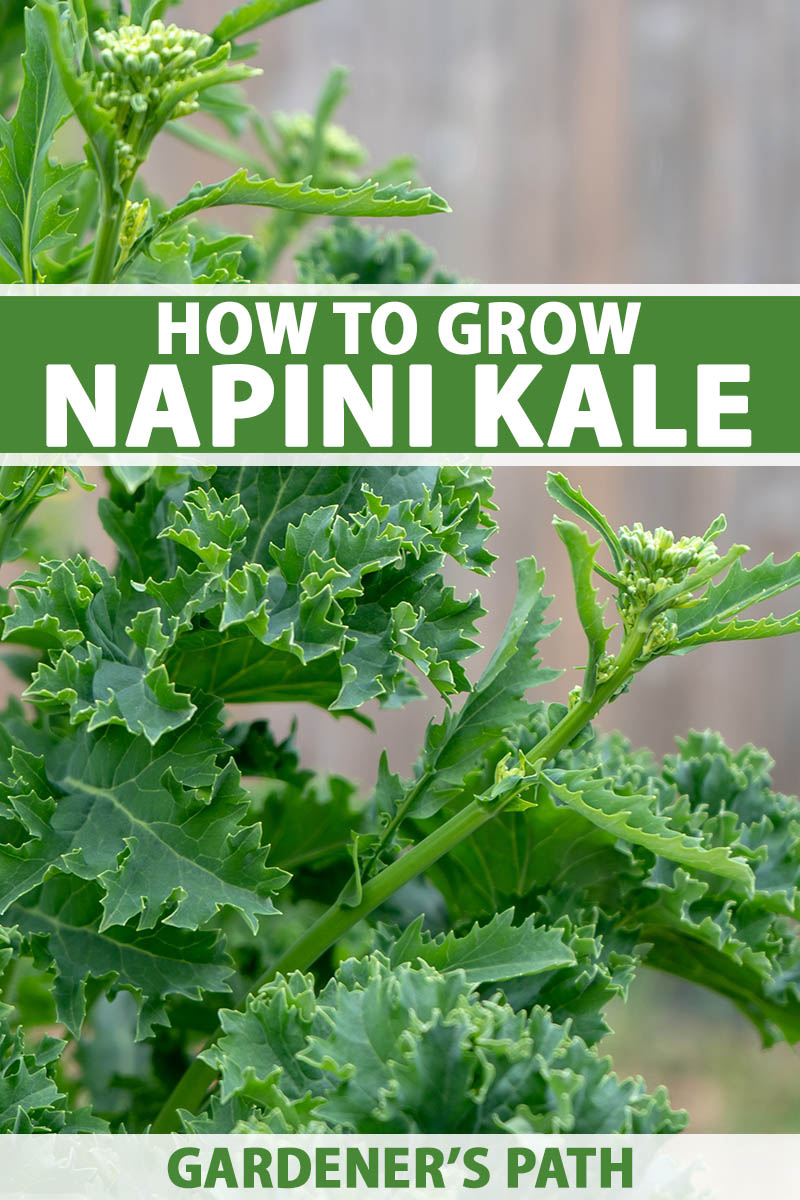
We link to vendors to help you find relevant products. If you buy from one of our links, we may earn a commission.
They are so sweet and delicious, even my family of skeptics can get on board.
What You’ll Learn
What Is Napini?
Napini, also known as kale rabe (and not to be confused with broccoli rabe), refers to the budding stems and leaves of the kale plant when they are harvested for use as a vegetable.
Harvesting kale for napini is done in the second year, once the plant starts to bolt, and before the flowers appear.
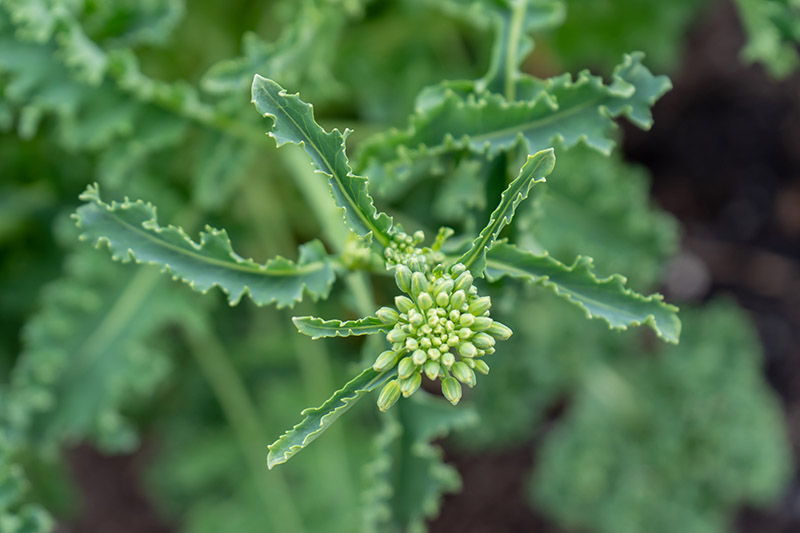
Kale is a cold hardy biennial. This means if it’s planted in late summer or fall, it will spend the first season developing strong roots and leaves.
After going dormant through the winter, growth will begin again in spring, and the plant will bolt – sending up flowering stalks, which eventually set seed prior to finishing its life cycle.
The flowering buds that shoot up during the spring of the second season can be harvested and enjoyed in much the same way as broccoli rabe or broccolini.

By leaving your plants in the ground, you’re getting a harvest of leaves in the first season, and a harvest of flower stalks when the plants bolt in the spring.
While any variety of kale, B. oleracea var. acephala, is edible at this bolting stage, the Russo-Siberian cultivars of B. napus var. pabularia, are specifically grown for napini, and they have a mild, almost sweet flavor.
B. napus originated as a naturally occurring hybrid of B. oleracea and B. rapa, and the species comprises B. napus var. napobrassica, the rutabaga, as well as B. napus var. napus used for producing rapeseed – or canola – oil.
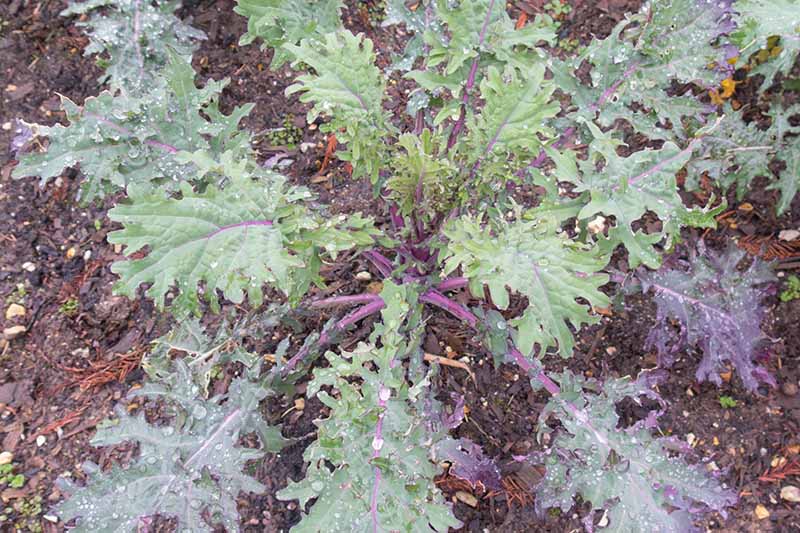
Siberian varieties are incredibly cold tolerant, overwintering in temperatures as low as -10°F. When planted in the fall, they may be overwintered successfully to produce tender and sweet flowering shoots the following spring.
Propagation
Direct sow seed in late summer or early fall, in a weed-free garden bed with well-draining soil amended with compost.
Sow seeds 1/4 to 1/2 inch deep in rows spaced a few inches apart. After plants have their first set of true leaves, thin seedlings to 8-12 inches apart.
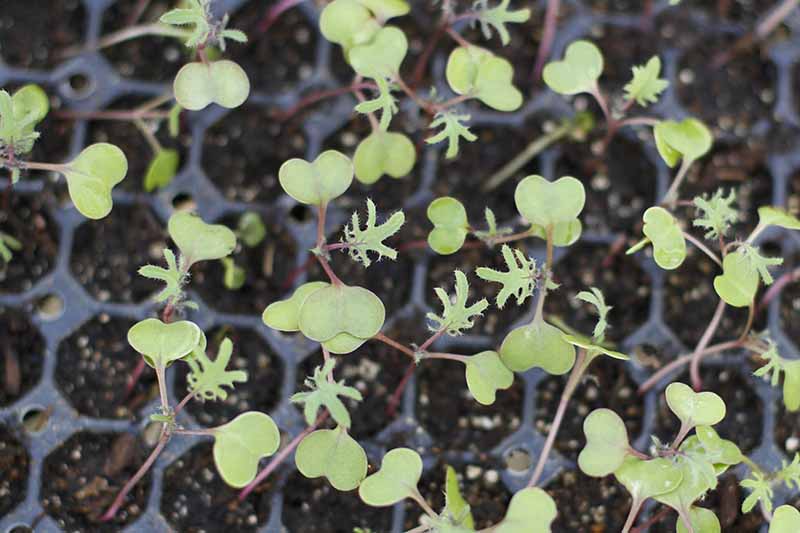
You can also start with transplants purchased from a nursery or garden center.
Plant out 6 to 8 weeks before the first frost so that plants have time to become established before winter.
Learn more about how far apart to plant kale here.
How to Grow
When growing kale for napini, seeds should be planted during the late summer or early fall and then overwintered under a thick straw mulch, in anticipation of a spring harvest.
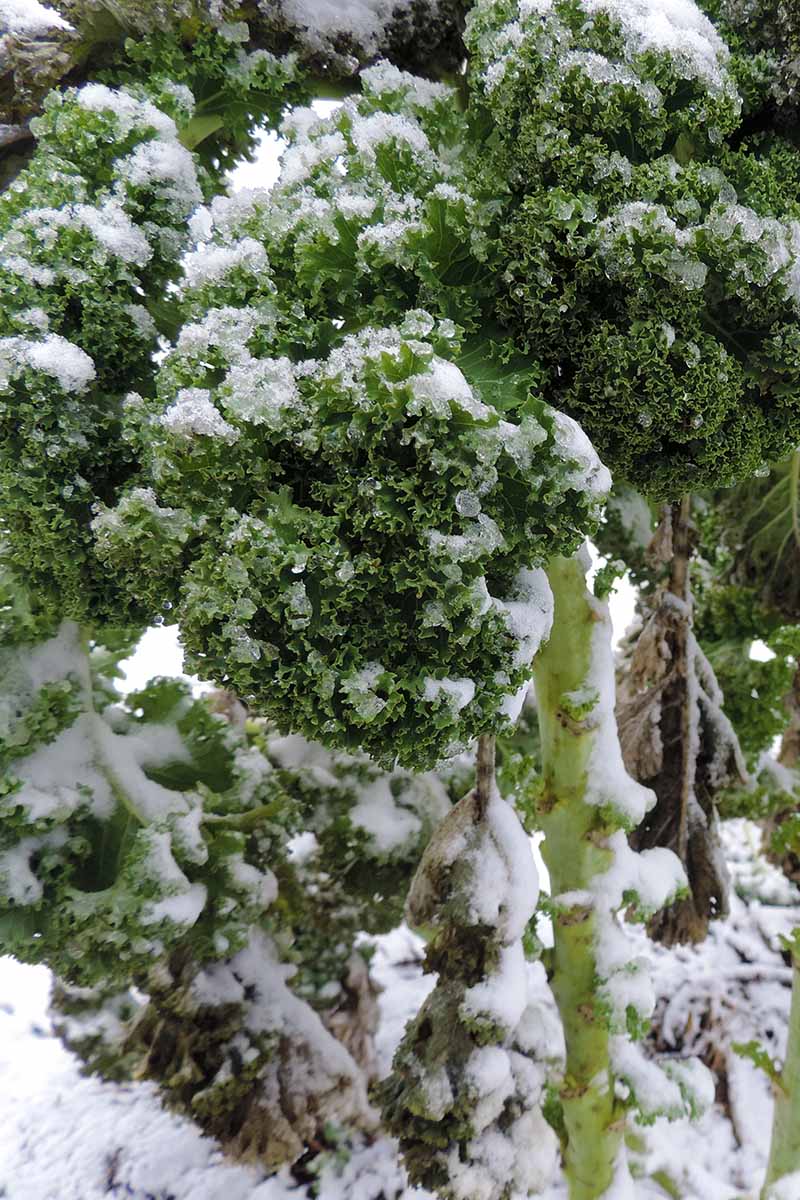
Plant in full or partial sun, in soil amended with nutrient rich compost. Siberian kale is incredibly hardy and can be grown in USDA Hardiness Zones 2-10.
Keep plants well watered. They need about 1 to 2 inches of water a week during the growing season.
Apply a thick layer of straw mulch around the base of the stems to help retain moisture. Once temperatures begin to approach freezing, this mulch layer becomes critical to protecting plants through the winter months.
You can harvest the leaves during the winter. Once growth resumes in spring, side dress with fresh compost and add a bit of fresh mulch to keep the soil moist. Watch for the development of shoots, a sign that the plant is bolting.
See our full guide to learn more about how to grow kale in the garden.
Growing Tips
- Plant in late summer or early fall.
- Provide full sun or partial shade, and nutrient rich, well-draining soil.
- Provide 1 to 2 inches of water per week during the growing season.
- Surround with a thick layer of straw mulch to overwinter.
- Side dress with fresh compost in the spring.
Cultivars to Select
Here are two cultivars ideal for a fresh napini harvest in springtime.
Red Russian
This ‘Red Russian’ cultivar is a high yielding, versatile variety perfect for growing in all Hardiness Zones. Enjoy the leaves in the fall, and harvest the napini the following spring.
The beautifully vibrant red stems will also add a bit of color to your winter veggie garden.
Find packets of seeds in a variety of sizes from True Leaf Market.
Learn about how to grow ‘Red Russian’ kale in this guide.
Dwarf Siberian
If you’re gardening in a small space, try this dwarf Siberian cultivar. Harvest curly leaves during fall and winter.
Producing tender blue-green leafy flower heads around 15 inches tall, this cold tolerant variety is another great choice for overwintering.
Seeds are available for purchase from Eden Brothers.
Managing Pests and Disease
Napini kale is susceptible to the same pests and diseases that can affect other cruciferous vegetables. In general, practicing good crop rotation, keeping brassica plants spread out in the garden, and planting in nutrient-rich soil will mitigate the risk.
Pests
These are some of the common pests to keep an eye out for especially in the early spring:
Aphids
Infestations of these tiny insects often develop quickly at times when plants are less vigorous, such as when they are young, or during flowering and seed formation – a key period in the napini growing process.
In large enough numbers, aphids can stunt growth or cause plants to die. Use a hard spray of water from the hose to remove aphids, or if infestations persist, try neem oil or insecticidal soap.
Learn how to manage aphids in your garden here.
Cabbage Loopers
These little green caterpillars can quickly cause incredible amounts of damage to leaves. They chew large holes in foliage, and if infestations spread rapidly, these insects may destroy entire plants.
You can pick them off by hand whenever you see them, or use a floating row cover or netting to protect plants. You can also kill the caterpillars by sprinkling the leaves with diatomaceous earth.
Get more information about cabbage looper control here.
Flea Beetles
These jumping black beetles love to eat tiny holes in foliage. Keep an eye on plants in spring, as this is when the beetles emerge from the soil. Use row covers to protect crops if necessary.
You can sprinkle foliage and the surrounding soil with diatomaceous earth, or spray with neem oil if need be.
Read more about combatting flea beetles in our guide here.
Disease
Kale is susceptible to a number of diseases, both bacterial and fungal.
Clubroot Rot
This disease affects the roots, inhibiting the ability of plants to take up water and nutrients, and leads to stunted growth, wilting, and eventual death.
Clubroot is difficult to eradicate once established, so prevention is key. Always plant in nutrient rich, healthy soil and rotate crops regularly to reduce risk.
Black Rot
This disease is caused by a bacteria, Xanthomonas campestris, and will make the leaves turn black and die off.
Look for V-shaped lesions around the edges of leaves. This pathogen is often spread through infected seeds, so be sure to buy from a reputable source.
Read more about black rot control here.
Damping Off
This disease causes immature plants to wilt and die, and can be an issue especially for young transplants. It can be avoided providing good air circulation immediately after germination.
Read more about preventing damping off here.
Have More Questions?
Are you encountering an insect or disease that’s attacking your crops? Learn more about pests and diseases that affect kale here.
Harvesting
Spring of the second season is the time to harvest napini. Snap off the budding shoots as they appear, cutting them 4 to 6 inches from the bud.
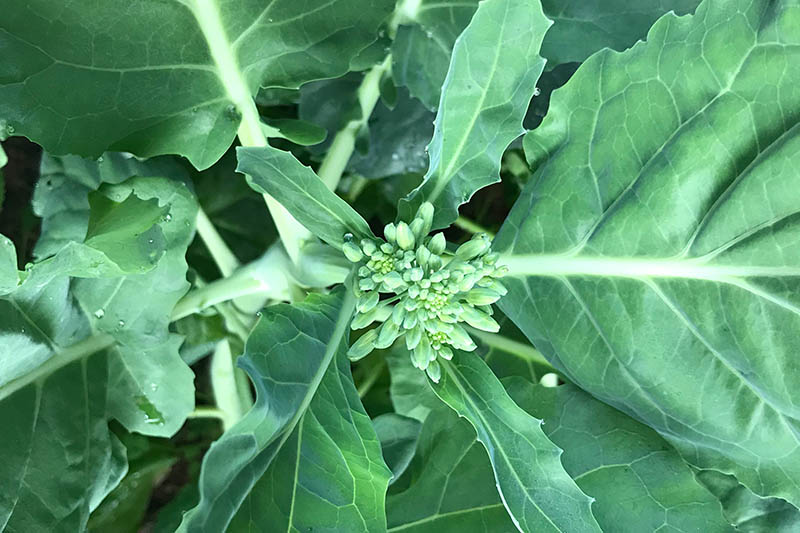
You want to keep an eye on the plants and harvest them in the budding stage, before they open into flowers.
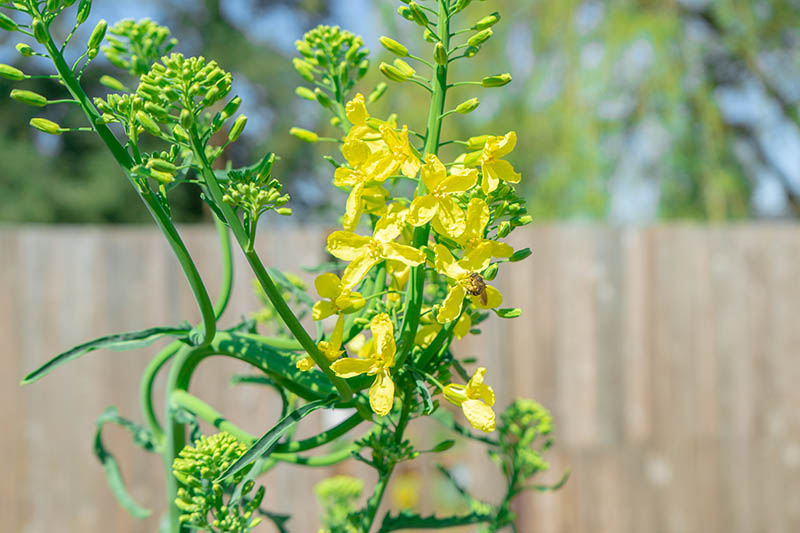
If you pinch back some of the buds as they grow, you will encourage the plant to produce more flower heads.
If you allow some of the flowers to go to seed, you can harvest and save the seeds for planting next year.
Preserving
To store napini in the refrigerator, place the florets in an unsealed plastic bag in the crisper drawer. Do not wash until just before use. They should last for 3 to 5 days.
If you somehow manage to restrain yourself from eating your whole harvest right away, you can also freeze napini to cook with later on, but first it’ll need blanching.
To do this, rinse and cut the napini into bite-sized pieces, and toss them into boiling water for 1 to 2 minutes. Remove with a slotted spoon and quickly dunk in an ice water bath to stop the cooking process.
Allow the pieces to drain thoroughly, and then freeze in a single layer on a baking sheet lined with parchment paper. Once frozen, you can transfer them to a sealed freezer bag or container. Use within 3 months.
Recipes and Cooking Ideas
Napini is tender and delicious. The buds, flowers, and leaves are all edible, and you can eat them in just about any way you would eat greens.
Raw, steamed, boiled, sauteed, roasted – you can’t really go wrong!
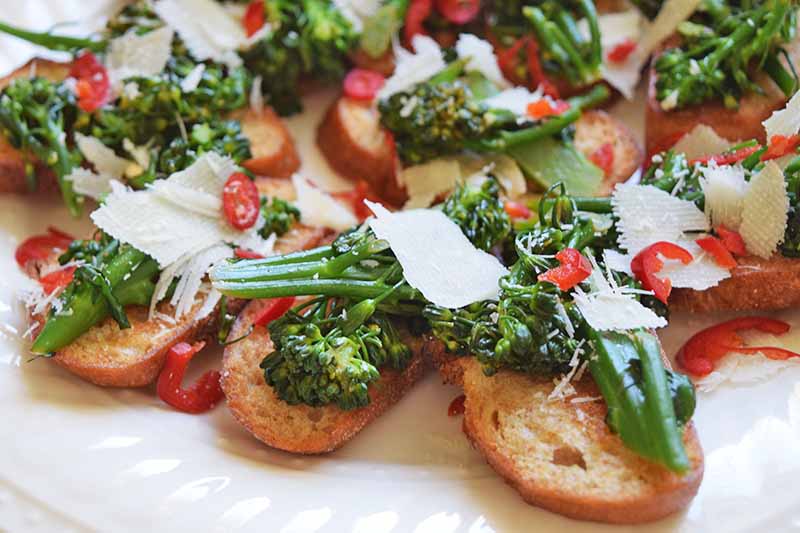
You can use napini as a substitute in any recipe that calls for broccolini or broccoli rabe, such as these delicious broccoli rabe tartines, from our sister site, Foodal.
My favorite way to eat kale rabe is to toss it in a simple lemon balsamic vinaigrette, and saute in butter and garlic.
Welcoming the Springtime with Second-Season Vegetables
To me, nothing says springtime better than a fresh sautee of early spring vegetables. With napini kale, I can get my leafy-green fix the previous season, allow my plants to overwinter, and enjoy a second harvest of early springtime deliciousness.
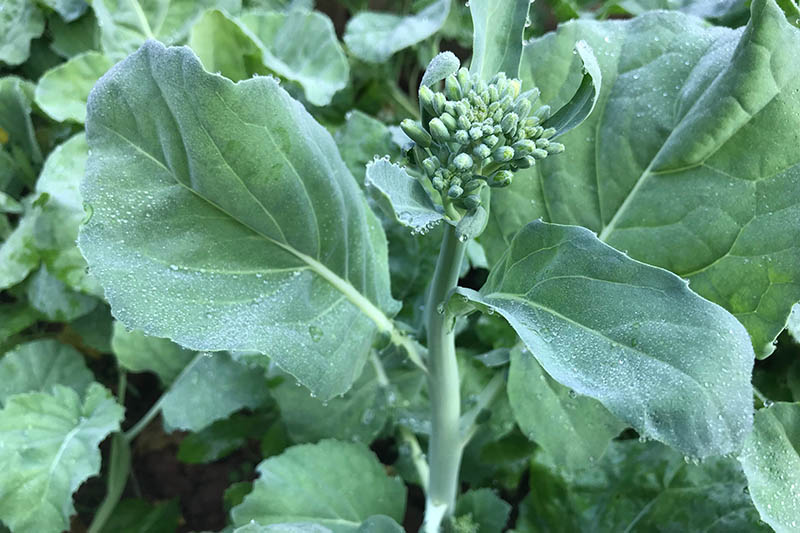
And I can even get my family excited about eating these, since they are tender and crunchy, with a sweeter flavor than the leafy greens!
Have you ever tried growing napini? Share your tips and tricks in the comments below!
For more information about growing kale in your garden, you’ll need the following guides next:
- The Best Companion Plants to Grow with Kale
- Will Kale Grow in Containers? Tips for Growing Your Crop in Pots
- 6 Best Types of Kale for Cold Climates
© Ask the Experts, LLC. ALL RIGHTS RESERVED. See our TOS for more details. Product photos via Eden Brothers and True Leaf Market. Uncredited photos: Shutterstock. With additional writing and editing by Clare Groom and Allison Sidhu.
